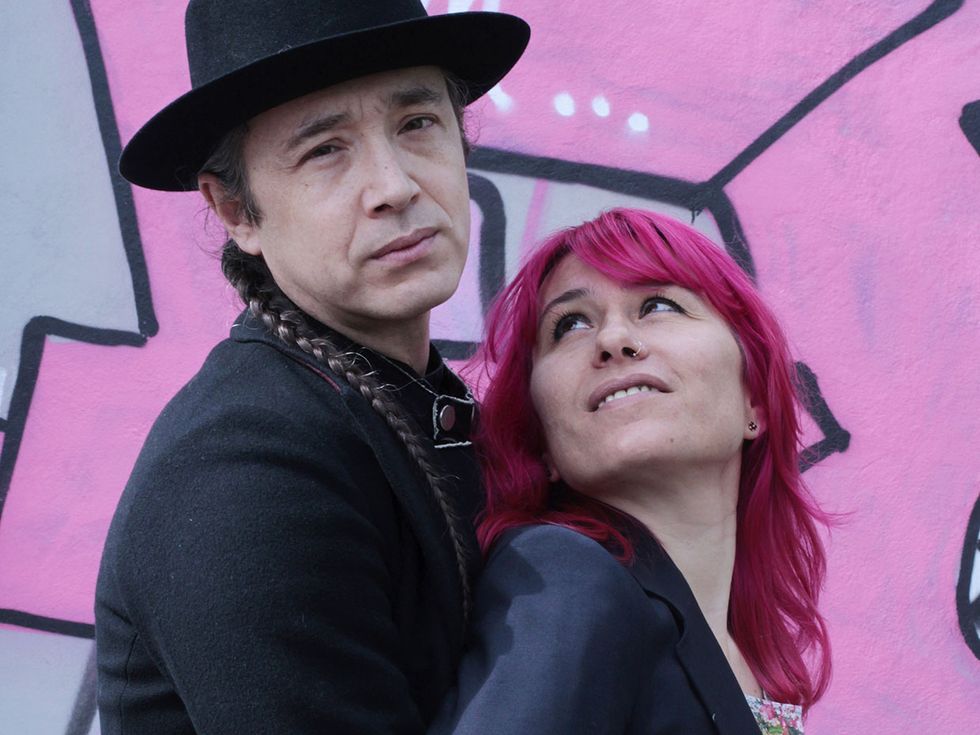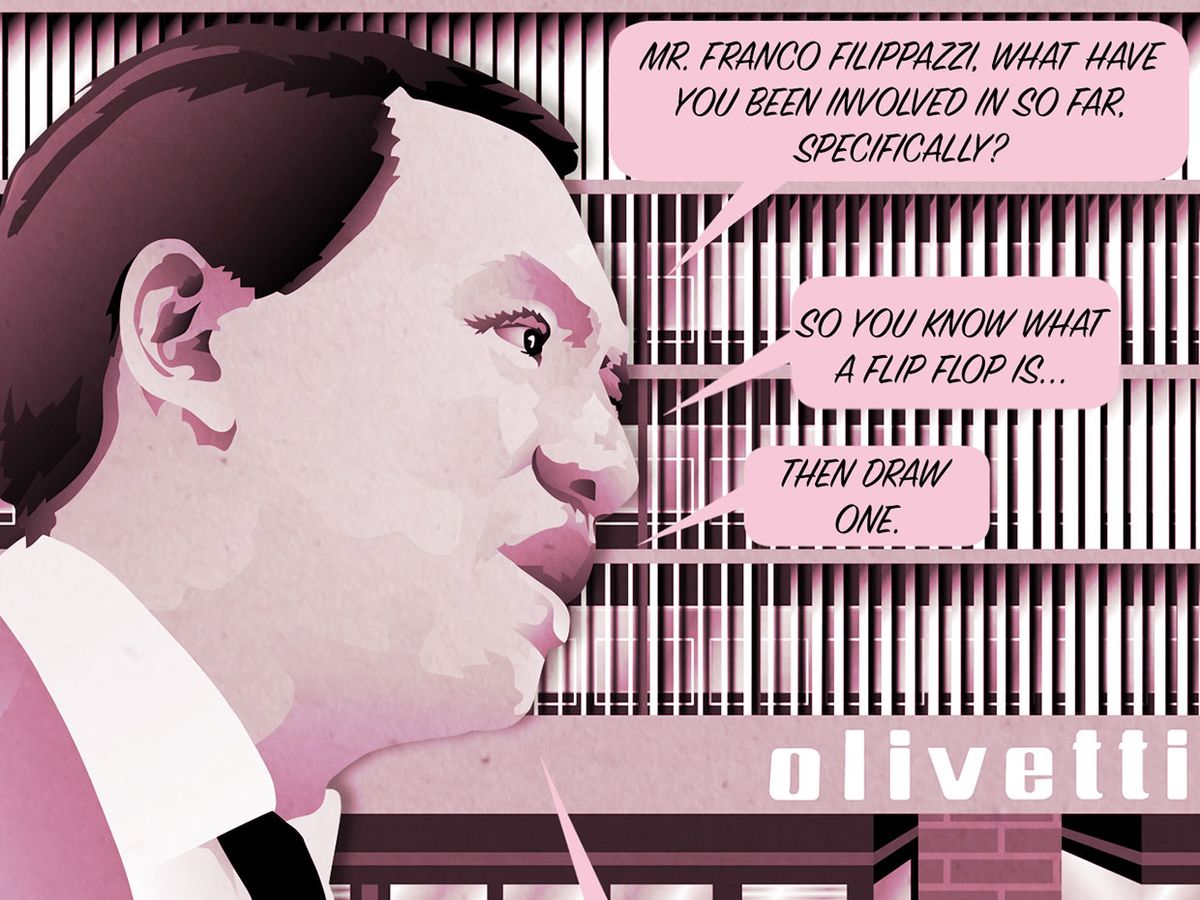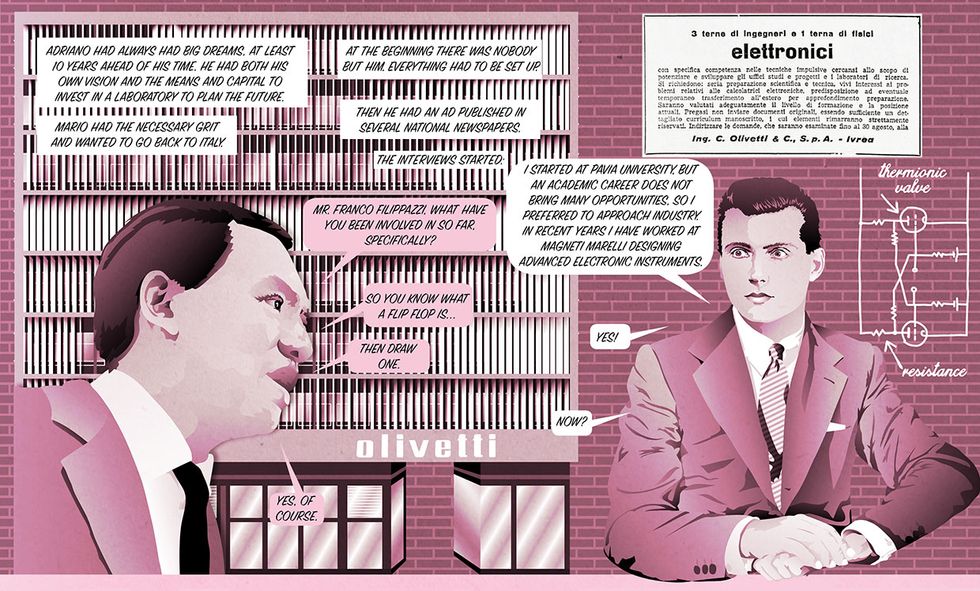The Chinese-Italian engineer Mario Tchou was, by all accounts, brilliant. Born and raised in Italy and educated in the United States, he led the Olivetti company’s ambitious effort to build a completely transistorized mainframe computer in the late 1950s. During Mario’s tenure, Olivetti successfully launched the ELEA 9003 mainframe and founded one of the first transistor companies. And yet, even in Italy, his story is not well known.
The historical obscurity of such an important figure troubled Ciaj Rocchi and Matteo Demonte, a husband-and-wife team of illustrators based in Milan. And so they created a short graphic novel about Tchou and the Olivetti computer project, as well as a short animation [shown at top]. The graphic novel appeared in the 12 April issue of La Lettura, the Italian cultural magazine, where Demonte and Rocchi both work.
If Tchou’s isn’t exactly a household name, how did the pair come to learn about him? Rocchi says they might have also remained in the dark—if not for the birth of their son in 2007. “We wanted to make sure he knew about his family and where he came from,” Rocchi says. Their family tree includes Demonte’s grandfather, who had emigrated to Milan from China in 1931. “I thought, if I don’t write this down for my son, it will be lost,” Rocchi recalls.

The pair immersed themselves in the history of Chinese immigrants in Italy over the last century. In 2015, they published the graphic novel Primavere e autunni (“Springs and Autumns”), a biography of Demonte’s grandfather. Two years later, they published a second graphic novel, Chinamen, which tells the story of ten of the most prominent Chinese-Italian families in Milan. (In the book’s afterword, Demonte and Rocchi note that the term “Chinamen” was once widely used but has come to have a pejorative connotation; they deliberately chose it “for its evocative character. We liked that a single word, like a symbol, could express the essence of our story.”)
“This isn’t just a history of the Chinese,” Rocchi says. “It’s the history of Italy.” To help readers make this connection, she pored over old photographs, to accurately capture the clothing, hairstyles, furniture, and street scenes of the period. “Readers recognize their own story in the pictures that we draw,” Rocchi says.
So how does the story of Chinese immigration link up to Tchou and to Olivetti? While researching their first two books, Rocchi says, “We kept running across the name ‘Tchou Yin.’ His signature appeared on many documents.” They discovered that Tchou was a Chinese diplomat stationed in Rome. They also learned about Tchou’s remarkable son, Mario.
After studying at the Sapienza University of Rome, Mario Tchou won a scholarship to the Catholic University of America, where he earned a bachelor’s degree in electronic engineering. He then got a master’s in physics from the Polytechnic Institute of Brooklyn. In 1954, he was working at Columbia University when Adriano Olivetti, Olivetti’s visionary leader, recruited him to oversee the company’s new computer division.
At Olivetti, Mario nurtured a generation of talented engineers and scientists. He personally hired every member of his team, using what was at the time an unconventional interview style. He wasn’t really interested in where a candidate had studied or worked, Rocchi says. “Instead, he’d ask you to solve a problem, like ‘How much does a handful of ball bearings weigh?’”
Demonte and Rocchi spent about a year researching, writing, and illustrating their graphic short story about Tchou and Olivetti. They tracked down surviving members of Tchou’s team, including Franco Filippazzi and Renato Betti, and they contacted Tchou’s daughters. (One of the illustrations, of Mario and Adriano standing in front of the ELEA 9003, was used to illustrate an article by the historian Elisabetti Mori for the June issue of IEEE Spectrum.) Il Computer di Mario e Adriano brings to life the remarkable characters behind this forgotten history.
Rocchi says she and Demonte are now working on a larger graphic novel about the history of modern computers. “So far, we have only looked at a little part, just the Italian part,” she says. “The story is much bigger than that.”

